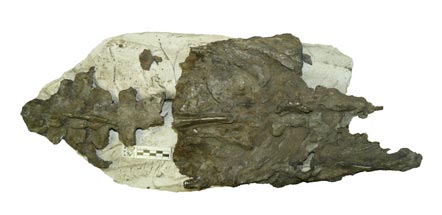Picking up a Rare Prehistoric Penguin
Researchers Discover Fossils of Giant Penguin in Antarctica
A team of researchers from the Natural Sciences Museum of La Plata Province (Argentina), have uncovered the fossilised remains of a giant penguin at the start of a summer expedition to Antarctica. The fossils indicate that this particular type of flightless bird stood around 6 feet 5 inches tall (nearly two metres high), making it the largest penguin known to science.
Giant Penguin Fossils
Researcher Carolina Acosta, compared this new fossil find to the largest extant penguin species, the Emperor Penguin (Aptenodytes forsteri) which can weigh up to forty-five kilogrammes and stands around four feet (1.2 metres) high.
She stated:
“This is the largest penguin known to date in terms of height and body mass.”
Earlier this year, scientists from the Ashoro Museum of Palaeontology (Japan) uncovered the fossils of two new species of prehistoric penguin from the Waitaki region of New Zealand. One of these species Kairuku grebneffi, was estimated to have stood nearly five feet tall (1.5 metres) and may have weighed as much as 130 lbs (60 kilogrammes). At the time of this discovery, this species was declared the largest known in the fossil record, but this new discovery from Antarctica indicates an even larger prehistoric flightless bird.
Fossil Discovery in Antarctica
Picture credit: Natural Sciences Museum of La Plata Province
A More Intensive and Complex Study of Modern Penguins
Head of Collections at the Natural Sciences Museum of La Plata, Dr Marcelo Reguero, when asked to comment on the new fossil discovery stated that the work of the research team:
“will allow for a more intensive and complex study of the ancestors of modern penguins”.
There are plans to re-visit the location next summer when the weather in Antarctica would be more conducive to a scientific expedition. The fossils date to around thirty-four million years ago (Oligocene Epoch), at this time the world was warmer than it is today, however, changes were occurring in the Southern Ocean. The continent of Antarctica had finally split away from other landmasses that once made up the super-continent known as Gondwanaland. Antarctica was now roughly in the position it occupies today, sitting on the southern pole of the planet.
Surrounded by water and with sun for little over half a year, the continent began to undergo a transformation and for the first time in hundreds of millions of years, ice sheets began to form and permanent ice could be found at the South Pole.
Looking for More Fossil Evidence
In its next expedition to Antarctica, during the region’s summer, the team will seek additional fossils of the newly discovered species, as well as information about its anatomy and how the giant penguin might have moved. The palaeontologists are confident that this species had a similar diet to that of modern penguins, spearing fish and cephalopods with its seven inch long (18 centimetre) sharp beak.
Previous finds from prehistoric penguins indicated they did not sport the iconic black and white feathers the birds are known for today, but had reddish-brown and grey plumage.
For models and replicas of prehistoric animals including theropod dinosaurs: Prehistoric Animal Models and Replicas (PNSO).


